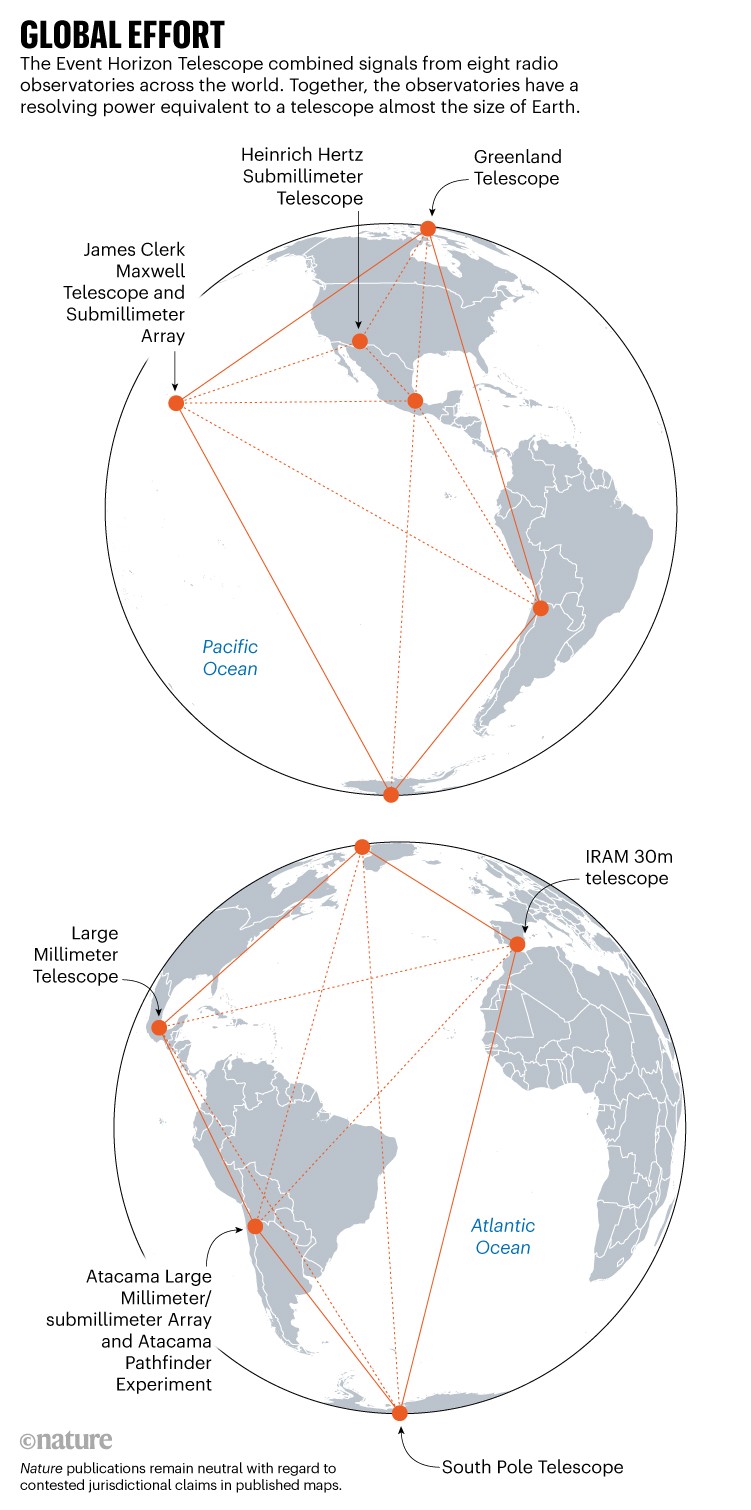Portal to Expiration
"[Wonderful to see] the first direct image of the gentle giant in the centre of our galaxy.""They [supermassive black holes] go through periods where there is a lot of material around them. And then they go through these quiescent phases like the one at the centre of our galaxy where matter is just trickling in.""We love our black hole."Feryal Ozel, astronomer, University of Arizona"The smaller physical size of Sgr A* [Sagittarius A*] also means that everything changes about a thousand times faster for Sgr A* than M87."We must also peer through the messy disk of our own galaxy to view Sgr A*, which blurs and distorts the image."Lindy Blackburn, radio astronomer, Harvard-Smithsonian Center for Astrophysics
 |
They're ravenous collapsars, are black holes, so dense and heavy their inexorable gravity pull ensnares any celestial object that ventures too near its portal's event horizon, the point at which stars, planets, gas dust, ice and any forms of electromagnetic radiation is pulled deep within and ceases to exist. Nature's ultimate waste bin. Nature's ways are infinite and mysterious, humanity specializing in attempting to understand its motivations and blueprints and outcomes along with all the elements that comprise nature's great project, the expanding universe, can only be hypothesized.
And some of those educated theories turn out to be right, just ask Einstein's ghost. The very effort in straining the human brain to try to understand the vastness of the universe and its complexities is itself a conundrum. Time and space are beyond our full comprehension. We speak in light years' distance, of origins back to the unimaginably faint passage of time. We are not even certain that time exists. We search for answers and nurture the hope that more advanced, more intelligent creatures may one day guide us to the answers of these mysteries.
So far they seem determined -- if indeed any extraterrestrials exist, and why should they not? -- to avoid us. If they are intelligent and they observe human behaviour, that is not entirely inexplicable. Our own galaxy, the Milky Way, a spiral galaxy that revolves like a pinwheel to the music of the celestial rhythm of existence, contains an estimated 100 billion stars. Our sun is not, relatively speaking, a very large star, and our Earth, a little rock revolving around our sun, is dependent for life itself on its existence.
Now, an image has been produced of a formerly theorized-existence black hole, a ravenous end-of-life phenomenon for matter teetering close to its hungry maw. The first such black hole's existence to be verified through the Event Horizon Telescope, an international collaboration that produced the first photograph of an immense black hole at the centre of a different galaxy was revealed in 2019. That image was of a super-massive black hole in a galaxy about 54 million light years from Earth with a mass 6.5 billion times of our son, called Messier 87 (M87).
Now the second image to be produced by the Event Horizon Telescope has been identified within the Milky Way Galaxy, our very own. As imaging technology becomes more technically acute there are hopes a video might some day be produced that might offer a closer observation point to clear up lingering fundamental questions about these mysterious giant objects, the central vacuum cleaners of the galaxies housed in the Universe, the abode of all that exists.
Sagittarious "A" star has a mass four million times greater than that of our sun, located roughly 26,000 light-years which represents the distance light travels in a year, 95. trillion kilometres from Earth. Astrophysicist Michael Johnson describes Sagittarius A* as "ravenous but inefficient", for it seems to be resting rather than actively engorging. Like a boa constrictor that has swallowed a large creature whole after crushing it with its massive musculature, and now just relaxes, replete, allowing its gastric juices to slowly digest its meal over a lengthy period of time.

Labels: Astronomy, Astrophysics, Event Horizon Telescope, Milky Way, Sagittarius "A" Star

0 Comments:
Post a Comment
<< Home